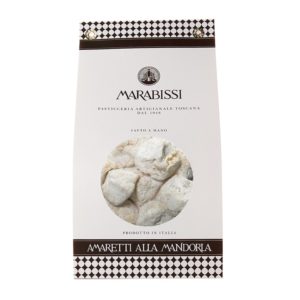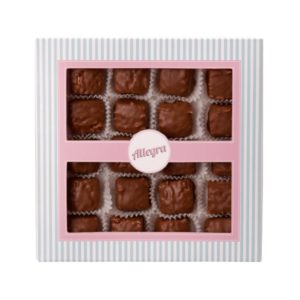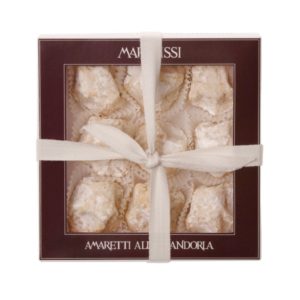Tuscany tradition is particularly rich in dried biscuits and desserts, some of them are famous all over the world: Cantucci, Ricciarelli, Panforte, and Cavallucci.
For three generations Marabissi has been producing, following the ancient family recipes, these pastries which often come from the Middle Age. These products recall travels to the East, knights, ladies, rich courts and wayfarers; bringing with them the history and the legends of Tuscany people and land.
MARABISSI TRADITION
At early XIII century, from the far away East, the first spices arrive as very precious goods to monasteries and abbeys, to pharmacies and to the houses of rich people. From now on, different are the stories and the legends explaining the origin of the recipe of the first panforte (panpepato) and whether the lay druggist or the monastery druggist was the first to formulate the ancient recipe. From the gastronomic point of view, in monasteries there are many documents about ancient honeyed and spiced bread and only later panpepato will be found on the shelves of druggists. In the half XV century, Siena druggists assessed that the true panpepato, the good one (“bono”) should have been prepared and sold only in their apothecary’s shops; the first panforte factory was founded in Siena in
June 1829 by the druggist Giovanni Parenti. A new variety of panforte, which will be very successful, was born in 1879 when Margherita of Savoy and her husband Umberto, sovereigns of Italy, arrive to Siena for the Palio. In such an event, Enrico Righi, owner of Panforte Parenti factory, offers to the queen a delicate white Panforte, later called Panforte Margherita, after the queen. From then on, the Panforte Margherita became the most famous and appreciated for its perfume and delicacy .
Enrico Righi, owner of Panforte Parenti factory, offers to the queen a delicate white Panforte, later called Panforte Margherita, after the queen.
A new variety of panforte, which will be very successful, was born in 1879 when Margherita of Savoy and her husband Umberto, sovereigns of Italy, arrive to Siena for the Palio.
 |
 |
 |
 |
In such an event, Enrico
Righi, owner of Panforte Parenti factory, offers to the queen a
delicate white Panforte, later called Panforte Margherita, after
the queen. From then on, the Panforte Margherita became the
most famous and appreciated for its perfume and delicacy .

